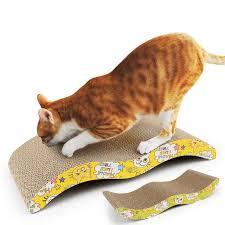Create the Perfect Play Area for Your Feline Friends

Cats are natural climbers and scratchers, and keeping them entertained is essential for their physical and mental health. One simple and effective way to provide your pet with an enjoyable activity is by creating a diy cat scratcher. This not only helps protect your furniture from claw marks but also encourages your cat to exercise and play. With just a few materials and a bit of creativity, you can design a scratcher that suits your space and your cat’s personality.
Choosing the Right Materials
When building a scratcher, choosing the right materials is crucial. Sturdy cardboard, sisal rope, or soft fabric can make excellent scratching surfaces. Cardboard is lightweight and easy to replace, while sisal rope offers durability and a satisfying texture for cats. You can also repurpose old furniture pieces like wooden boxes or shelves, adding layers of comfort with fabric or padding. Always make sure the materials are safe and non-toxic to avoid harming your pet.
Designing for Engagement
Cats love variety, so it’s important to make the scratcher interactive. Consider incorporating multiple textures and levels. For example, a flat base with an inclined scratching ramp or dangling toys can keep your cat engaged for hours. Adding small platforms or hiding spots makes the scratcher even more appealing. Observing your cat’s play habits can help you tweak the design to maximize fun and activity.
Placement Matters
Where you place your scratcher is just as important as how you design it. Cats are creatures of habit, so putting the scratcher in a familiar area where your cat already likes to play or scratch can increase its usage. Avoid high-traffic zones where your pet might feel stressed, and ensure the area has enough space for your cat to stretch and jump freely. A well-placed scratcher not only keeps your cat happy but also helps maintain a cleaner and more organized home.
Maintenance Tips
Keeping the scratcher in good condition ensures it lasts longer and remains attractive to your cat. Regularly trim loose threads or replace worn sections to prevent injuries. Cleaning the scratcher with a gentle, pet-safe solution will remove dust and odors, making it more inviting. Rotate the scratcher occasionally to keep the novelty alive and prevent your cat from losing interest.
Encouraging Positive Habits
Rewarding your cat for using the scratcher can reinforce good behavior. Treats, praise, or a brief play session after scratching will encourage your feline to use the scratcher consistently. Avoid scolding your cat for scratching furniture, as this can create anxiety and reduce trust. By making the scratcher a positive experience, you create a fun and stress-free environment for your pet.
Conclusion
life Gizmo hub offers a wealth of ideas and inspiration for cat owners looking to enhance their pets’ daily lives. With a little effort and creativity, building a safe, engaging, and durable scratcher can provide your cat with endless hours of fun and exercise. From choosing the right materials to designing interactive features, a homemade scratcher is a practical and rewarding project for any cat lover. By implementing these tips, you can ensure your cat stays healthy, active, and entertained, all while protecting your home furniture.
- Art
- Causes
- Crafts
- Dance
- Drinks
- Film
- Fitness
- Food
- Giochi
- Gardening
- Health
- Home
- Literature
- Music
- Networking
- Altre informazioni
- Party
- Religion
- Shopping
- Sports
- Theater
- Wellness




